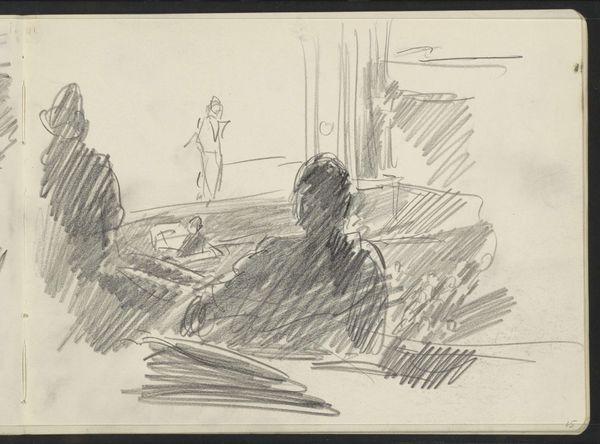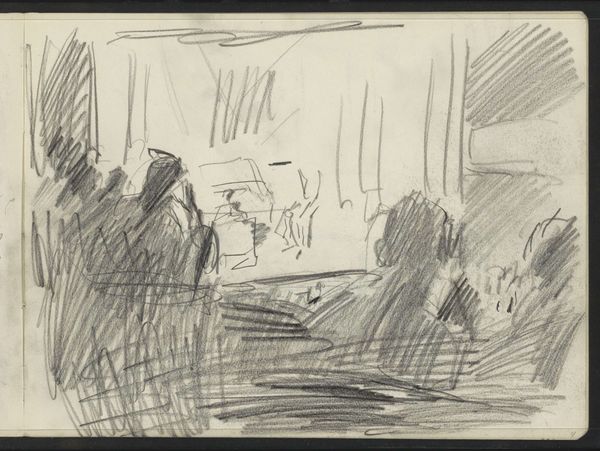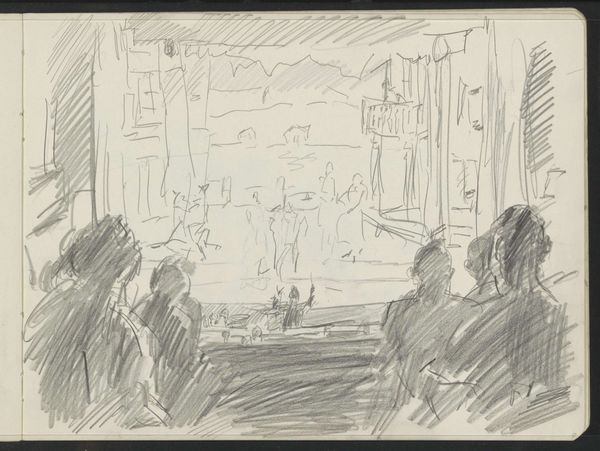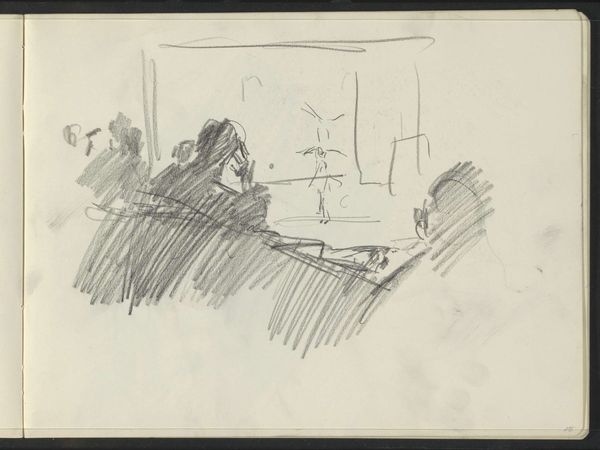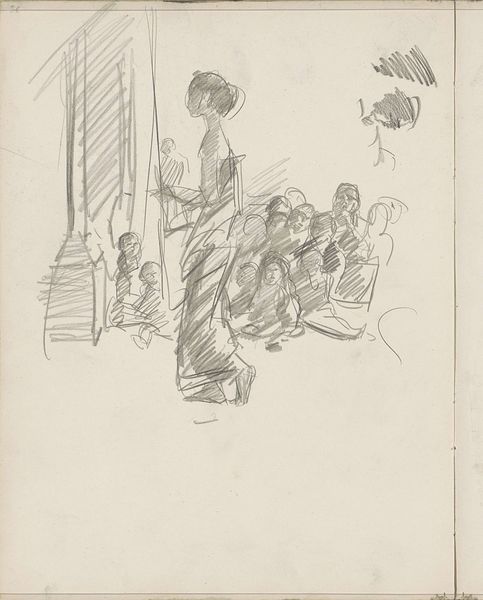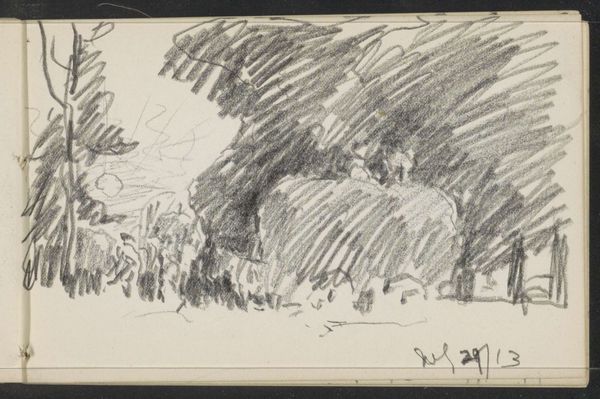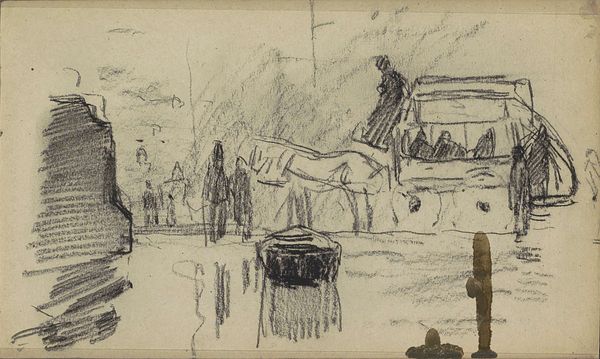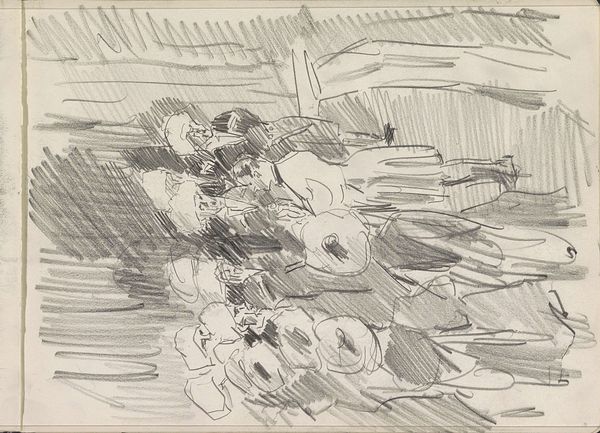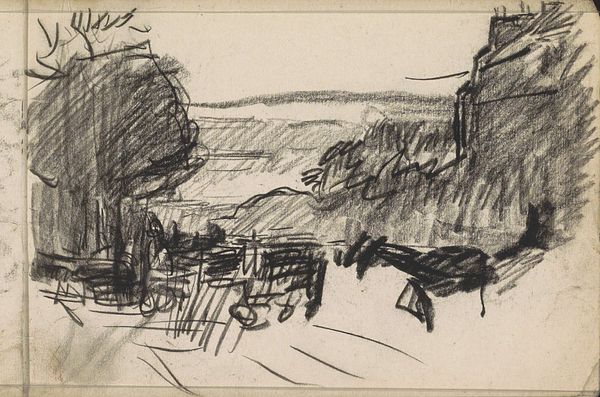
Copyright: Rijks Museum: Open Domain
Curator: Oh, this feels like peeking into someone's private sketchbook. There’s an almost voyeuristic intimacy to it. Editor: Exactly! What we have here is a drawing, a pen and pencil sketch actually, by Isaac Israels, called "Toeschouwers bij een theatervoorstelling", placing us in the midst of "Spectators at a theatrical performance". It was likely created sometime between 1915 and 1925. The scene comes to us from the Rijksmuseum. Curator: Israels' focus clearly wasn't the play itself. The performers are almost stick figures, barely formed on stage. Instead, it's the audience he finds interesting. Look at how the mass of people becomes the subject itself. What dynamics and social expectations of theater-going are visible here? Editor: The blurry, smudged quality—I almost feel like I'm in the dark, craning my neck to see what's happening. What is fascinating, though, is despite that anonymity, there's something incredibly human here. Perhaps it is a window into the artist’s gaze itself. Curator: Precisely. Israels’ style, rooted in Impressionism, grants us the impression of a fleeting moment. How do themes of class and access intertwine within theatrical spaces like the one presented? Does the sketched aesthetic reflect an intentional attempt to capture everydayness or is it merely a work in progress? Editor: Hmmm, that's a good question! But there is so much to find fascinating! This snapshot—imperfect, ephemeral—draws you in. You can almost hear the hushed whispers and rustling programs, see the reflected stage light, the shared breath of collective anticipation… all there to create something profound in how something felt! Curator: Ultimately, this drawing provokes questions regarding representation. It blurs the boundaries between art, spectator, and performance. As you leave, consider the many social contexts that shape our appreciation of cultural experiences, then as now. Editor: Indeed, consider your place in that audience, then and now. Where do you see yourself fitting in the performance and in life? A simple, scribbled scene asks enormous questions, what do we expect and how are expectations ultimately let down or fulfilled?
Comments
No comments
Be the first to comment and join the conversation on the ultimate creative platform.
